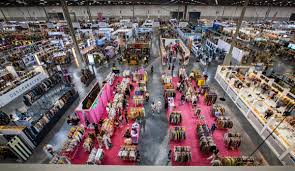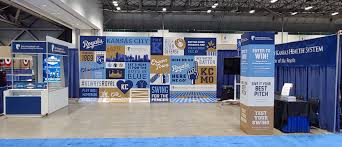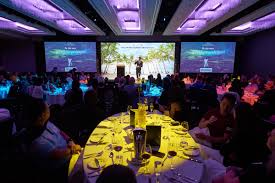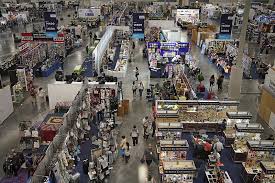MINExpo 2024: The Premier Mining Industry Event
MINExpo International is the world’s largest mining trade show, showcasing the latest innovations and technologies in the mining industry. The upcoming MINExpo 2024 promises to be a groundbreaking event that brings together industry leaders, experts, and professionals from around the globe.
With a focus on sustainability, efficiency, and safety, MINExpo 2024 will feature cutting-edge equipment, machinery, and solutions designed to optimize mining operations while minimizing environmental impact. Attendees can expect to explore exhibits from leading manufacturers, attend educational sessions on industry trends, and network with peers to exchange ideas and best practices.
MINExpo 2024 will provide a platform for companies to showcase their products and services, engage with key stakeholders, and forge new partnerships that drive innovation and growth in the mining sector. From autonomous vehicles to renewable energy solutions, attendees can expect to discover the future of mining at this must-attend event.
Mark your calendars for MINExpo 2024 and join us in exploring the latest advancements in mining technology that are shaping the future of the industry. Stay tuned for updates on exhibitors, speakers, and special events as we count down to this exciting gathering of mining professionals from around the world.
Discover the Future of Mining: Top 5 Reasons to Attend MINExpo 2024
- 1. Largest mining trade show globally, showcasing cutting-edge innovations and technologies.
- 2. Focus on sustainability, efficiency, and safety in mining operations.
- 3. Opportunity to explore exhibits from leading manufacturers and learn about industry trends.
- 4. Networking platform to connect with industry experts and forge new partnerships.
- 5. Discover the future of mining through advanced equipment, machinery, and solutions.
Challenges of Attending MINExpo 2024: High Travel Costs, Overwhelming Scale, and Limited Accommodations
- Travel expenses for attending MINExpo 2024 may be costly for some participants, especially those traveling from distant locations.
- The sheer size of the event and the number of exhibitors may make it challenging for attendees to visit all booths and attend all sessions of interest.
- Limited availability of accommodations near the event venue could pose challenges for attendees in securing convenient lodging options.
1. Largest mining trade show globally, showcasing cutting-edge innovations and technologies.
MINExpo 2024 stands out as the premier mining industry event globally, offering attendees the opportunity to explore the latest cutting-edge innovations and technologies in the sector. As the largest mining trade show in the world, MINExpo 2024 provides a platform for industry leaders, professionals, and experts to discover groundbreaking advancements that are shaping the future of mining operations. From state-of-the-art equipment to innovative solutions aimed at enhancing efficiency and sustainability, this event promises to showcase the forefront of technological progress within the mining industry.
2. Focus on sustainability, efficiency, and safety in mining operations.
MINExpo 2024 stands out for its strong emphasis on sustainability, efficiency, and safety in mining operations. By prioritizing these key aspects, the event highlights the industry’s commitment to responsible practices that not only enhance environmental stewardship but also improve operational performance. Attendees can expect to explore innovative solutions and technologies that promote sustainable mining practices, increase operational efficiency, and enhance safety protocols to create a more sustainable future for the mining industry.
3. Opportunity to explore exhibits from leading manufacturers and learn about industry trends.
MINExpo 2024 offers attendees the invaluable opportunity to explore exhibits from top manufacturers in the mining industry and gain insights into the latest industry trends. By engaging with these leading manufacturers, participants can discover cutting-edge technologies, innovative equipment, and sustainable solutions that are shaping the future of mining operations. This hands-on experience allows attendees to stay informed about industry advancements, network with industry experts, and gather knowledge that can drive their own businesses forward.
4. Networking platform to connect with industry experts and forge new partnerships.
MINExpo 2024 offers a valuable networking platform for attendees to connect with industry experts and forge new partnerships. This pro of the event provides a unique opportunity for professionals in the mining industry to expand their network, exchange ideas, and collaborate on innovative solutions. By facilitating meaningful connections and fostering relationships, MINExpo 2024 empowers participants to build strategic partnerships that drive growth and success in the ever-evolving mining sector.
5. Discover the future of mining through advanced equipment, machinery, and solutions.
At MINExpo 2024, attendees will have the unique opportunity to discover the future of mining through advanced equipment, machinery, and solutions. From cutting-edge technologies to innovative processes, this pro highlights the event’s commitment to showcasing the latest developments that are shaping the mining industry’s future. By exploring these advancements firsthand, attendees can gain valuable insights into how they can enhance their operations, improve efficiency, and stay ahead of the curve in an ever-evolving industry landscape.
Travel expenses for attending MINExpo 2024 may be costly for some participants, especially those traveling from distant locations.
Travel expenses for attending MINExpo 2024 may pose a significant challenge for some participants, particularly those traveling from distant locations. The cost of airfare, accommodation, and other related expenses can add up quickly, making it financially burdensome for individuals or companies with limited budgets to attend the event. This barrier to participation could potentially prevent valuable industry professionals from benefiting from the networking opportunities, educational sessions, and product showcases available at MINExpo 2024. Efforts to address this con, such as offering virtual attendance options or providing travel assistance grants, may help make the event more accessible to a wider range of participants.
The sheer size of the event and the number of exhibitors may make it challenging for attendees to visit all booths and attend all sessions of interest.
The sheer size of MINExpo 2024 and the multitude of exhibitors may present a challenge for attendees looking to explore all booths and attend all sessions of interest. With a vast array of exhibits and educational sessions spread across the event venue, attendees may find it difficult to navigate the extensive offerings within the limited duration of the event. Prioritizing key areas of interest and planning ahead will be essential for maximizing the experience and ensuring that attendees make the most of their time at this premier mining industry event.
Limited availability of accommodations near the event venue could pose challenges for attendees in securing convenient lodging options.
Attendees of MINExpo 2024 may encounter challenges due to the limited availability of accommodations near the event venue. Securing convenient lodging options could be a concern for those looking to stay close to the venue. It is advisable for attendees to plan their accommodations well in advance to ensure a comfortable and hassle-free experience during the event.









